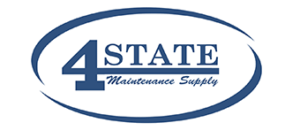Flu and Illness Prevention Procedures (CDC)

Cleaning and disinfecting are part of a broad approach to preventing infectious diseases in schools. To help slow the spread of influenza (flu), the first line of defense is getting vaccinated. Other measures include covering coughs and sneezes, washing hands, and keeping sick people away from others. Below are tips on how to slow the spread of flu specifically through cleaning and disinfecting.
1. Know the difference between cleaning, disinfecting, and sanitizing
Cleaning removes germs, dirt, and impurities from surfaces or objects. Cleaning works by using soap (or detergent) and water to physically remove germs from surfaces. This process does not necessarily kill germs, but by removing them, it lowers their numbers and the risk of spreading infection.
Disinfecting kills germs on surfaces or objects. Disinfecting works by using chemicals to kill germs on surfaces or objects. This process does not necessarily clean dirty surfaces or remove germs, but by killing germs on a surface after cleaning, it can further lower the risk of spreading infection.
Sanitizing lowers the number of germs on surfaces or objects to a safe level, as judged by public health standards or requirements. This process works by either cleaning or disinfecting surfaces or objects to lower the risk of spreading infection.
2. Clean and disinfect surfaces and objects that are touched often
Follow your school’s standard procedures for routine cleaning and disinfecting. Typically, this means daily sanitizing surfaces and objects that are touched often, such as desks, countertops, doorknobs, computer keyboards, hands-on learning items, faucet handles, phones, and toys. Some schools may also require daily disinfecting these items. Standard procedures often call for disinfecting specific areas of the school, like bathrooms.
Immediately clean surfaces and objects that are visibly soiled. If surfaces or objects are soiled with body fluids or blood, use gloves and other standard precautions to avoid coming into contact with the fluid. Remove the spill, and then clean and disinfect the surface.
3. Simply do routine cleaning and disinfecting
It’s important to match your cleaning and disinfecting activities to the types of germs you want to remove or kill. Most studies have shown that the flu virus can live and potentially infect a person for only 2 to 8 hours after being deposited on a surface. Therefore, it is not necessary to close schools to clean or disinfect every surface in the building to slow the spread of flu. Also, if students and staff are dismissed because the school cannot function normally (e.g., high absenteeism during a flu outbreak), it is not necessary to do extra cleaning and disinfecting.
Flu viruses are relatively fragile, so standard cleaning and disinfecting practices are sufficient to remove or kill them. Special cleaning and disinfecting processes, including wiping down walls and ceilings, frequently using room air deodorizers, and fumigating, are not necessary or recommended. These processes can irritate eyes, noses, throats, and skin; aggravate asthma; and cause other serious side effects.
4. Clean and disinfect correctly
Always follow label directions on cleaning products and disinfectants. Wash surfaces with a general household cleaner to remove germs. Rinse with water, and follow with an EPA-registered disinfectant to kill germs. Read the label to make sure it states that EPA has approved the product for effectiveness against influenza A virus.
If a surface is not visibly dirty, you can clean it with an EPA-registered product that both cleans (removes germs) and disinfects (kills germs) instead. Be sure to read the label directions carefully, as there may be a separate procedure for using the product as a cleaner or as a disinfectant. Disinfection usually requires the product to remain on the surface for a certain period of time.
Use disinfecting wipes on electronic items that are touched often, such as phones and computers. Pay close attention to the directions for using disinfecting wipes. It may be necessary to use more than one wipe to keep the surface wet for the stated length of contact time. Make sure that the electronics can withstand the use of liquids for cleaning and disinfecting.
Routinely wash eating utensils in a dishwasher or by hand with soap and water. Wash and dry bed sheets, towels, and other linens as you normally do with household laundry soap, according to the fabric labels. Eating utensils, dishes, and linens used by sick persons do not need to be cleaned separately, but they should not be shared unless they’ve been washed thoroughly. Wash your hands with soap and water after handling soiled dishes and laundry items.
5. Use products safely
Pay close attention to hazard warnings and directions on product labels. Cleaning products and disinfectants often call for the use of gloves or eye protection. For example, gloves should always be worn to protect your hands when working with bleach solutions.
Do not mix cleaners and disinfectants unless the labels indicate it is safe to do so. Combining certain products (such as chlorine bleach and ammonia cleaners) can result in serious injury or death.
Ensure that custodial staff, teachers, and others who use cleaners and disinfectants read and understand all instruction labels and understand safe and appropriate use. This might require that instructional materials and training be provided in other languages.
6. Handle waste properly
Follow your school’s standard procedures for handling waste, which may include wearing gloves. Place no-touch waste baskets where they are easy to use. Throw disposable items used to clean surfaces and items in the trash immediately after use. Avoid touching used tissues and other waste when emptying waste baskets. Wash your hands with soap and water after emptying waste baskets and touching used tissues and similar waste.
Article courtesy of the Centers for Disease Control and Prevention
http://www.cdc.gov/flu/school/cleaning.htm


